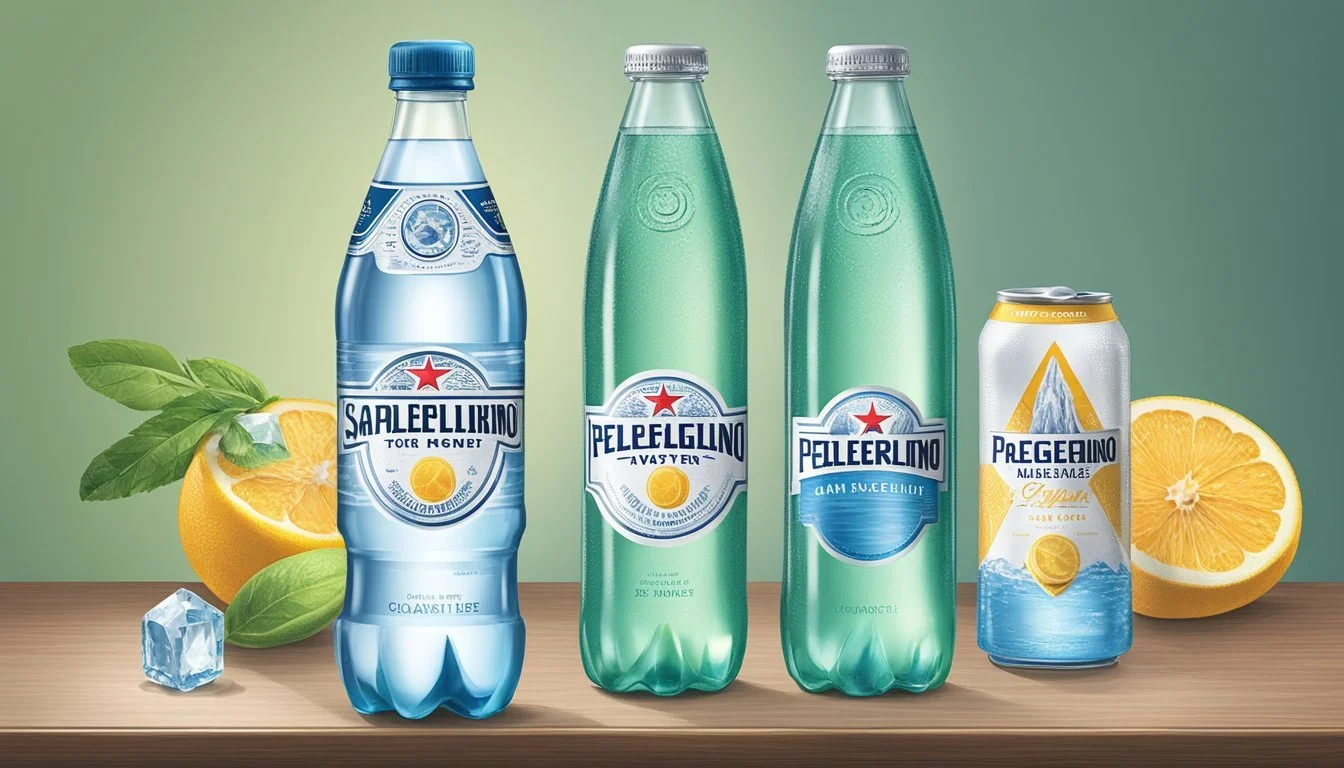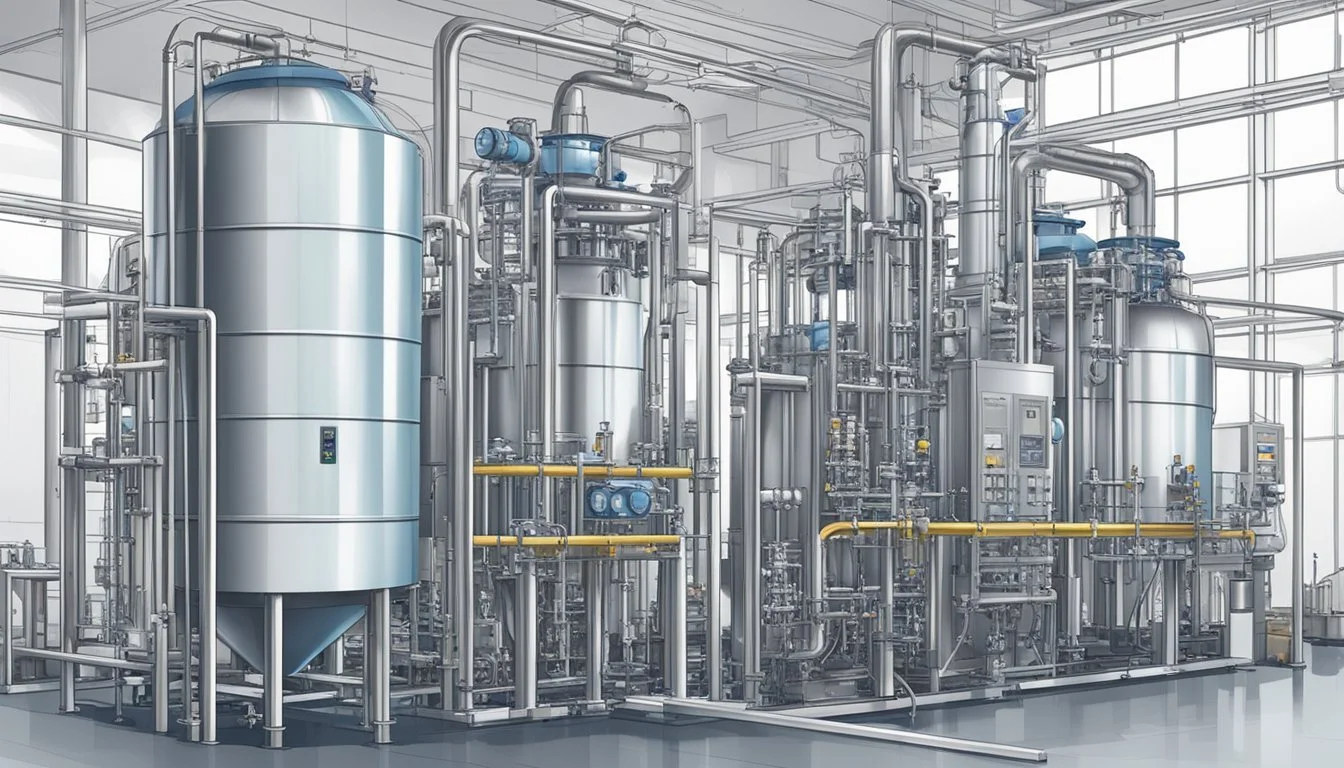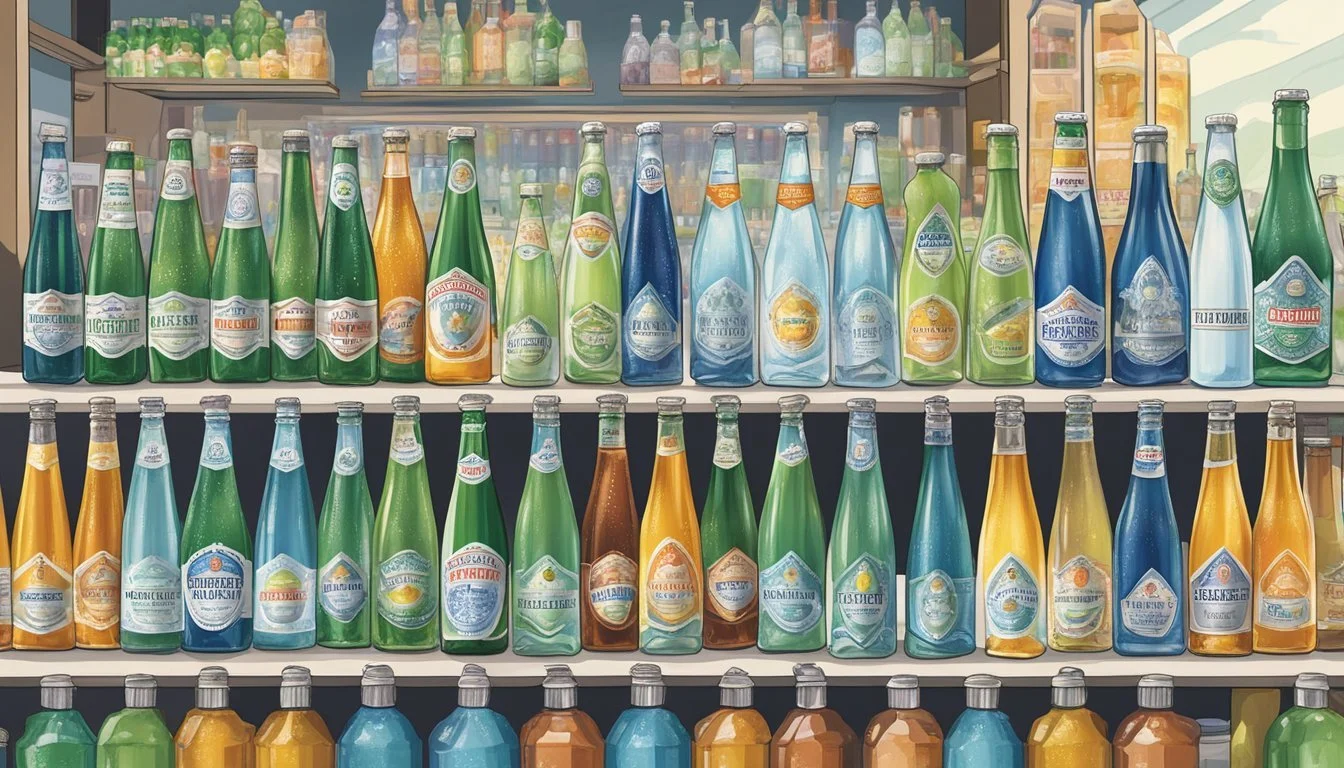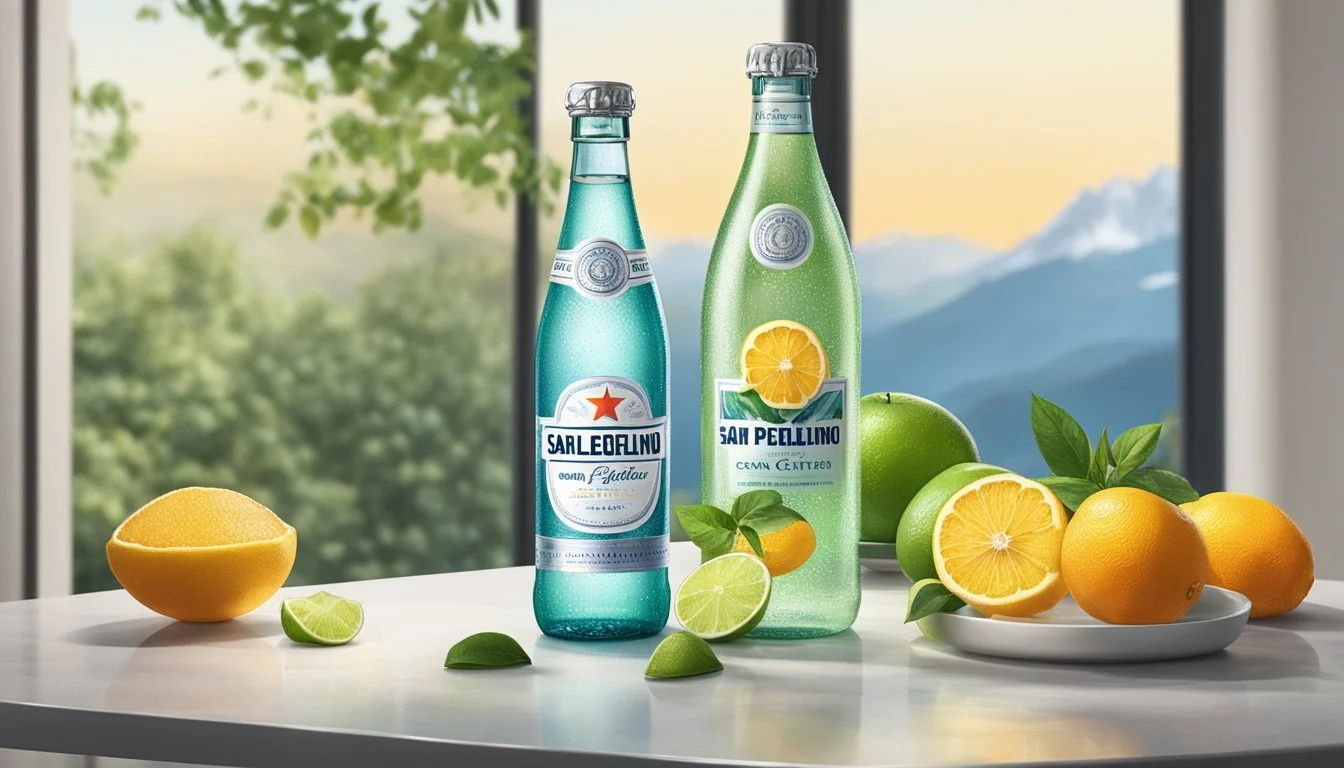San Pellegrino vs. Crystal Geyser
A Comparative Analysis of Bottled Waters
Consumers often debate over which bottled water brand stands out in the competitive market, focusing on popular choices like San Pellegrino and Crystal Geyser. These brands differ significantly in taste, sourcing, and reputation. San Pellegrino, known for its sparkling mineral water, offers a crisp and refreshing experience with a hint of natural carbonation. Crystal Geyser, on the other hand, prides itself on being bottled at the source from natural springs, delivering a pure and straightforward hydration option.
San Pellegrino provides a unique taste profile thanks to its mineral content and carbonation, making it a favored choice for those seeking a bit of zest in their water. On the contrary, Crystal Geyser appeals to consumers who prioritize a clean, uncomplicated taste in their bottled water. Price differences also come into play; San Pellegrino often commands a premium due to its distinct qualities and international reputation, whereas Crystal Geyser remains a budget-friendly choice without compromising on quality.
When deciding between San Pellegrino and Crystal Geyser, it boils down to personal preference in taste and budget considerations. Some may prefer the sparkling uniqueness of San Pellegrino, while others might lean towards the reliable purity of Crystal Geyser. With these factors in mind, readers can make an informed choice that best suits their hydration needs.
The History and Origin of Bottled Waters
The history and origin of bottled waters is rich and geographically diverse, shaped by the unique characteristics of their sources. This section will explore the origins of San Pellegrino and Crystal Geyser, focusing on their regional roots and historical significance.
Exploring San Pellegrino's Italian Roots
San Pellegrino's story begins in 1899, amid the picturesque landscape of San Pellegrino Terme in Italy. Located in the Province of Bergamo, Lombardy, the brand capitalized on the region's rich mineral resources. The company was officially listed on the Milan Stock Exchange that same year.
The unique mineral composition of San Pellegrino water is naturally occurring, giving it distinctive taste and effervescent qualities. By the end of its first year of production, the brand had produced 35,343 bottles, exporting over 5,500 internationally.
Owned by Nestlé since 1997, San Pellegrino has maintained its Italian heritage while expanding globally. The brand source retains its authenticity, continuously drawing water from the same natural springs.
Crystal Geyser's Californian Source
Crystal Geyser, on the other hand, sources its water from pristine locations in California. This American brand has established itself as a key player in the bottled water industry, particularly known for its commitment to sourcing water from natural springs.
California's geographical attributes provide an ideal environment for Crystal Geyser. The brand relies on renewable sources, ensuring that the natural springs are sustainably managed. This focus on natural purity distinguishes Crystal Geyser in the market.
Despite California's occasional drought challenges, the brand's strategic choice of spring locations ensures a steady supply. Crystal Geyser emphasizes purity and sustainability, making it a favored choice among environmentally conscious consumers.
Types of Bottled Water Explained
Bottled water comes in various types, each with unique characteristics. It's important to know the differences between sparkling and still water, the mineral content of natural mineral water, and the sources of spring water.
Distinguishing Sparkling Water from Still Water
Sparkling water contains dissolved carbon dioxide (CO₂), giving it effervescence. Brands like San Pellegrino are famous for their naturally sparkling water, often favored for its refreshing fizz and slight mineral taste.
Still water, on the other hand, is water without carbonation. Crystal Geyser offers still water that is often sourced from natural springs, providing a clean and smooth taste due to minimal processing.
Sparkling water can also be created artificially by adding CO₂ to still water. This option is available in grocery stores under various brand names.
Understanding Mineral Content in Natural Mineral Water
Natural mineral water comes from protected underground sources and retains its natural mineral content. San Pellegrino, for example, is rich in minerals like calcium, magnesium, and sodium, contributing to its distinct flavor profile.
The mineral content in natural mineral water is strictly regulated to ensure consistency and quality. This type of water is typically bottled at the source to maintain its purity.
Consumers may choose mineral water not just for hydration but also for the potential health benefits associated with the minerals it contains.
The Role of Spring Water and Its Sources
Spring water is sourced directly from natural springs, where the water flows to the surface. This water has usually been filtered by underground rocks, contributing to its purity. Crystal Geyser, for instance, sources its spring water from various locations, ensuring a fresh and clean taste.
The term natural spring versus purified water can be a point of confusion. Natural spring water is typically bottled at the source with minimal processing, while purified water undergoes extensive treatment processes like distillation or reverse osmosis.
Both types offer high-quality drinking options, but spring water is often preferred for its natural origin and minimal processing.
Production Process and Carbonation Techniques
San Pellegrino and Crystal Geyser employ unique methods in creating their sparkling waters. The production processes, including carbonation techniques and water sources, play a vital role in defining the taste and quality of these brands.
The Creation of Sparkling Waters like San Pellegrino and Crystal Geyser
San Pellegrino sources its water from natural springs in San Pellegrino Terme, Italy. This mineral-rich water undergoes natural carbonation as it flows through layers of limestone and volcanic rock.
Carbonation is enhanced by adding CO2 during the bottling stage, ensuring the signature fizz.
Crystal Geyser, on the other hand, also provides sparkling water by adding carbonation after the purification process. The water is usually sourced from springs across the United States.
San Pellegrino highlights its natural mineral content, while Crystal Geyser focuses on the crisp, clean finish achieved through modern carbonation techniques.
Sources and Purification Methods
San Pellegrino’s water originates in the Italian Alps, known for its purity and natural mineral content. The water is filtered through natural layers of rock, which enriches it with elements like calcium and magnesium.
Crystal Geyser obtains its water from multiple spring sources in the United States. The company emphasizes a multi-step purification process, including microfiltration and ozonation, to maintain high safety and quality standards.
San Pellegrino relies on the natural mineralization process unique to its source. Meanwhile, Crystal Geyser’s advanced purification methods ensure consistency across different locations.
Both brands uphold stringent quality control measures to deliver a refreshing product with distinctive characteristics.
Health Considerations in Bottled Water
When comparing San Pellegrino and Crystal Geyser, it’s essential to look into several health-related aspects such as mineral content, potential health benefits, and sodium content, as these factors can influence hydration and overall health.
Assessing Mineral Content and Health Benefits
San Pellegrino is renowned for its mineral-rich profile, which includes calcium, magnesium, and sulfates. These minerals can contribute positively to maintaining bone health and metabolic functions. Additionally, San Pellegrino’s mineral water is sourced from natural springs, suggesting lower contamination levels.
On the other hand, Crystal Geyser’s water, also sourced from natural springs, potentially contains beneficial minerals. However, reports have indicated variable levels of microplastics and contaminants like PFAS chemicals and residual arsenic, raising health concerns.
It’s crucial to consider if the presence of these minerals and potential contaminants align with one’s health objectives while choosing between these brands.
Sodium Content and Hydration
San Pellegrino contains a noticeable amount of sodium, which can affect hydration levels. Sodium is essential for bodily functions, but an excessive intake can lead to increased thirst and, potentially, elevated blood pressure. For those managing sodium intake, monitoring the consumption of mineral water like San Pellegrino is advised.
Crystal Geyser typically has lower levels of sodium compared to San Pellegrino, making it a preferable option for individuals sensitive to sodium intake. Lower sodium levels imply that it can aid in better hydration without overloading the body with additional sodium.
However, it’s important to check the specific sodium content on the bottle label to ensure it meets individual health requirements.
Taste Profiles: San Pellegrino vs. Crystal Geyser
San Pellegrino and Crystal Geyser each offer distinct taste experiences shaped by their mineral content and carbonation levels. These differences are critical for consumers seeking particular flavor profiles and refreshing qualities in their bottled water.
Comparing Flavor Notes
San Pellegrino has a crisp, clean flavor with subtle mineral undertones. Its distinct taste comes from its rich mineral content, giving it a slightly salty and metallic edge that many find refreshing.
In contrast, Crystal Geyser has a more neutral and mild flavor. For those who prefer a no-frills drinking experience, Crystal Geyser offers a clean taste with minimal mineral interference, making it less complex but equally refreshing.
The different mineral compositions between the two waters play a significant role in their unique taste profiles, appealing to varied palates.
Aftertaste and Refreshing Qualities
San Pellegrino leaves a light, lingering aftertaste due to its mineral content and carbonation. This aftertaste is often described as slightly bitter but remains popular among fans of sparkling beverages. The effervescence provides a refreshing sensation, making it a favored option for a palate cleanser.
On the other hand, Crystal Geyser boasts a clean finish with little to no aftertaste. Its straightforward nature makes it an excellent choice for everyday hydration without the added complexity of lingering flavors.
Whether one prefers the lingering mineral aftertaste of San Pellegrino or the clean and straightforward finish of Crystal Geyser can significantly influence their choice of bottled water.
Environmental Impact and Sustainability Practices
Both San Pellegrino and Crystal Geyser have distinct approaches to environmental stewardship, focusing on packaging materials and water source conservation to minimize impact.
Packaging Materials: Glass vs. Plastic Bottles
San Pellegrino primarily uses glass bottles, which are 100% recyclable and can be reused several times. This reduces the environmental impact by minimizing waste and energy consumption in producing new bottles. Glass also helps preserve the taste and quality of water, appealing to eco-conscious consumers.
Crystal Geyser opts for plastic bottles, specifically PET (polyethylene terephthalate). PET is recyclable, but its recycling rates are lower compared to glass. The company aims to increase the use of recycled plastic in its production. Polypropylene is often used for bottle caps, which, although recyclable, have a lower recycling rate than the bottles themselves.
Water Source Conservation and Company Footprints
San Pellegrino sources its water from natural springs in the Italian Alps, implementing stringent measures to protect these sources. They regularly monitor water withdrawal rates to ensure sustainability and the long-term health of the springs. The company also invests in local community projects to support environmental conservation.
Crystal Geyser sources water from various natural springs in the U.S. They emphasize transparency by providing detailed information on their water sources. Efforts are made to maintain low-impact operations by adhering to conservation practices. Crystal Geyser's sustainability commitment can also be seen in their investment in local ecosystems and initiatives for preserving biodiversity.
Market Presence and Consumer Choices
When comparing San Pellegrino and Crystal Geyser, it is important to understand how these brands are perceived by consumers and how they stand in the market. Exploring their market presence reveals insights into consumer behavior and choices.
Brand Perception and International Reach
San Pellegrino, an Italian brand, enjoys a luxury image and strong international presence. Known for its sparkling mineral water sourced from the Italian Alps, it resonates with consumers seeking premium, sophisticated choices.
Crystal Geyser, on the other hand, offers natural spring water sourced from various U.S. locations, positioning itself as a wholesome and accessible option. Their market presence leans more towards everyday affordability and accessibility, particularly in the domestic U.S. market.
Both brands cater to different consumer segments: San Pellegrino dominates in fine dining and upscale retail, whereas Crystal Geyser is more popular in supermarkets and convenience stores. This distinction highlights the varied consumer preferences and the importance of brand perception in influencing purchase decisions.
Alternatives in the Bottled Water Industry
The bottled water market includes numerous alternatives such as Aquafina, Nestlé Pure Life, and Acqua Panna. Aquafina focuses on affordability and wide availability, while Nestlé Pure Life emphasizes family-friendly branding and global reach, despite its divisive quality reviews.
Acqua Panna, another high-end Italian brand, often rivals San Pellegrino in the premium segment, enhancing consumer choice within the luxury category. The market is also witnessing the rise of niche brands offering specialized options like alkaline, flavored, and vitamin-enriched waters.
The proliferation of these alternatives showcases the dynamic nature of consumer preferences, where both premium and value-oriented options coexist, catering to diverse needs and budgets.
The Bottom Line: Which Bottled Water to Choose
When choosing between San Pellegrino and Crystal Geyser, several factors come into play for the consumer decision.
Flavor Profile:
San Pellegrino: Known for its distinctive sparkling quality. It has a slightly salty taste due to various natural minerals.
Crystal Geyser: Offers a clean and neutral taste. Available in both still and sparkling varieties.
Price:
San Pellegrino: Generally priced higher. Often positioned as a premium product in fine dining.
Crystal Geyser: Usually more affordable. Targets a broader consumer base looking for everyday hydration.
Mineral Content:
San Pellegrino: Rich in minerals like calcium, magnesium, and bicarbonate. Suitable for those who prefer mineral-rich waters.
Crystal Geyser: Contains fewer minerals. Purer water source catering to those who prefer a less mineralized taste.
Environmental Impact:
Review the packaging and sourcing practices. San Pellegrino often uses glass bottles, which are more recyclable.
Crystal Geyser typically uses plastic bottles. They are making strides towards more sustainable packaging.
Availability:
San Pellegrino: Widely available in grocery stores and restaurants globally.
Crystal Geyser: Also broadly available, especially in the United States.
Best Serving Temperature:
San Pellegrino: Optimal at 6-8°C (43-46°F) for the best sparkling experience.
Crystal Geyser: Around 10-12°C (50-54°F), particularly for its still variety.
Ultimately, the decision comes down to personal preference, budget, and specific needs regarding mineral content and taste.
More About San Pellegrino
Acqua Panna vs San Pellegrino: Which Bottled Water is Better?
Boxed Water vs San Pellegrino: Which Bottled Water is Better?
Core Hydration vs San Pellegrino: Which Bottled Water is Better?
Ice Mountain vs San Pellegrino: Which Bottled Water is Better?
Icelandic Glacial vs San Pellegrino: Which Bottled Water is Better?
Just Water vs San Pellegrino: Which Bottled Water is Better?
Mountain Valley Spring Water vs San Pellegrino: Which Bottled Water is Better?
Nestle Pure Life vs San Pellegrino: Which Bottled Water is Better?
Poland Spring vs San Pellegrino: Which Bottled Water is Better?
San Pellegrino vs Alkaline88: Which Bottled Water is Better?
San Pellegrino vs Aqua Carpatica: Which Bottled Water is Better?
San Pellegrino vs Cascade Mountain: Which Bottled Water is Better?
San Pellegrino vs Castle Rock: Which Bottled Water is Better?
San Pellegrino vs CBD Living: Which Bottled Water is Better?
San Pellegrino vs Crystal Lake: Which Bottled Water is Better?
San Pellegrino vs Essence pH10: Which Bottled Water is Better?
San Pellegrino vs Hawaii Volcanic: Which Bottled Water is Better?
San Pellegrino vs Hawaiian Springs: Which Bottled Water is Better?
San Pellegrino vs Kirkland Signature: Which Bottled Water is Better?
San Pellegrino vs Liquid Death: Which Bottled Water is Better?
San Pellegrino vs Open Water: Which Bottled Water is Better?
San Pellegrino vs Proud Source: Which Bottled Water is Better?
San Pellegrino vs Purely Sedona: Which Bottled Water is Better?
San Pellegrino vs Richard's Rainwater: Which Bottled Water is Better?
San Pellegrino vs Simple Truth: Which Bottled Water is Better?
San Pellegrino vs Smartwater: Which Bottled Water is Better?
San Pellegrino vs Solan de Cabras: Which Bottled Water is Better?
San Pellegrino vs Talking Rain AQA: Which Bottled Water is Better?
San Pellegrino vs Topo Chico: Which Bottled Water is Better?
San Pellegrino vs Weird Water: Which Bottled Water is Better?
San Pellegrino vs Whole Foods 365: Which Bottled Water is Better?
San Pellegrino vs Whole Foods Italian Still Mineral water: Which Bottled Water is Better?
San Pellegrino vs Zephyrhills: Which Bottled Water is Better?
More About Crystal Geyser
Acqua Pana vs Crystal Geyser: Which Bottled Water is Better?
Alkaline88 vs Crystal Geyser: Which Bottled Water is Better?
Aqua Carpatica vs Crystal Geyser: Which Bottled Water is Better?
Boxed Water vs Crystal Geyser: Which Bottled Water is Better?
Cascade Mountain vs Crystal Geyser: Which Bottled Water is Better?
Castle Rock vs Crystal Geyser: Which Bottled Water is Better?
Core Hydration vs Crystal Geyser: Which Bottled Water is Better?
Crystal Geyser vs CBD Living: Which Bottled Water is Better?
Crystal Geyser vs Crystal Lake: Which Bottled Water is Better?
Crystal Geyser vs Essence pH10: Which Bottled Water is Better?
Crystal Geyser vs Kirkland Signature: Which Bottled Water is Better?
Crystal Geyser vs Open Water: Which Bottled Water is Better?
Crystal Geyser vs Proud Source: Which Bottled Water is Better?
Crystal Geyser vs Richard's Rainwater: Which Bottled Water is Better?
Crystal Geyser vs Simple Truth: Which Bottled Water is Better?
Crystal Geyser vs Talking Rain AQA: Which Bottled Water is Better?
Crystal Geyser vs Weird Water: Which Bottled Water is Better?
Crystal Geyser vs Whole Foods 365: Which Bottled Water is Better?
Hawaii Volcanic vs Crystal Geyser: Which Bottled Water is Better?
Hawaiian Springs vs Crystal Geyser: Which Bottled Water is Better?
Ice Mountain vs Crystal Geyser: Which Bottled Water is Better?
Icelandic Glacial vs Crystal Geyser: Which Bottled Water is Better?
Just Water vs Crystal Geyser: Which Bottled Water is Better?
Liquid Death vs Crystal Geyser: Which Bottled Water is Better?
Mountain Valley Spring Water vs Crystal Geyser: Which Bottled Water is Better?
Nestle Pure Life vs Crystal Geyser: Which Bottled Water is Better?
Poland Spring vs Crystal Geyser: Which Bottled Water is Better?
Purely Sedona vs Crystal Geyser: Which Bottled Water is Better?
Smartwater vs Crystal Geyser: Which Bottled Water is Better?
Solan de Cabras vs Crystal Geyser: Which Bottled Water is Better?
Topo Chico vs Crystal Geyser: Which Bottled Water is Better?
Whole Foods Italian Still Mineral water vs Crystal Geyser: Which Bottled Water is Better?
Zephyrhills vs Crystal Geyser: Which Bottled Water is Better?






